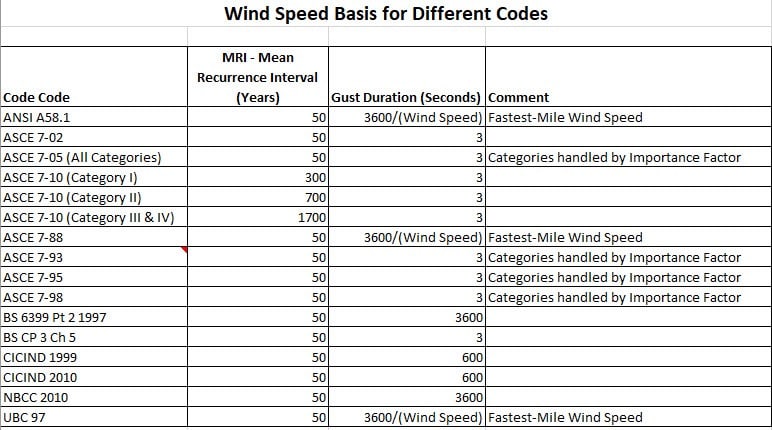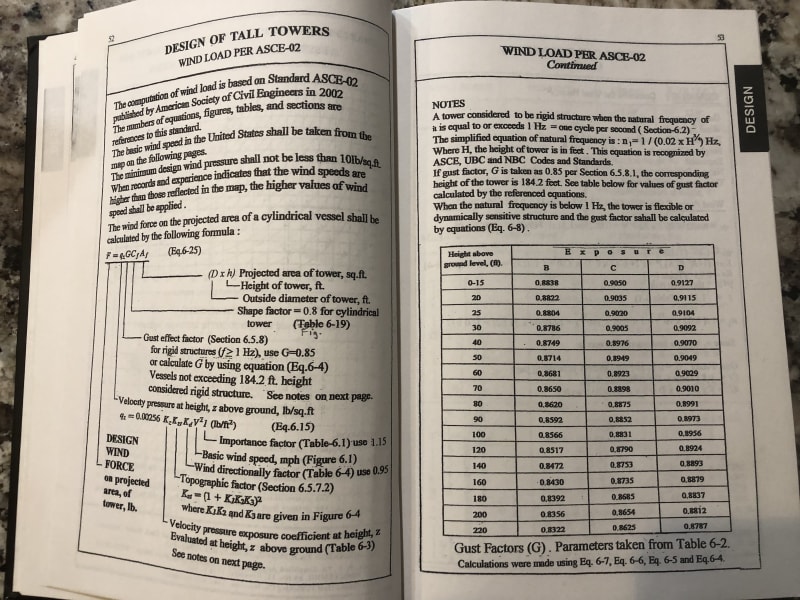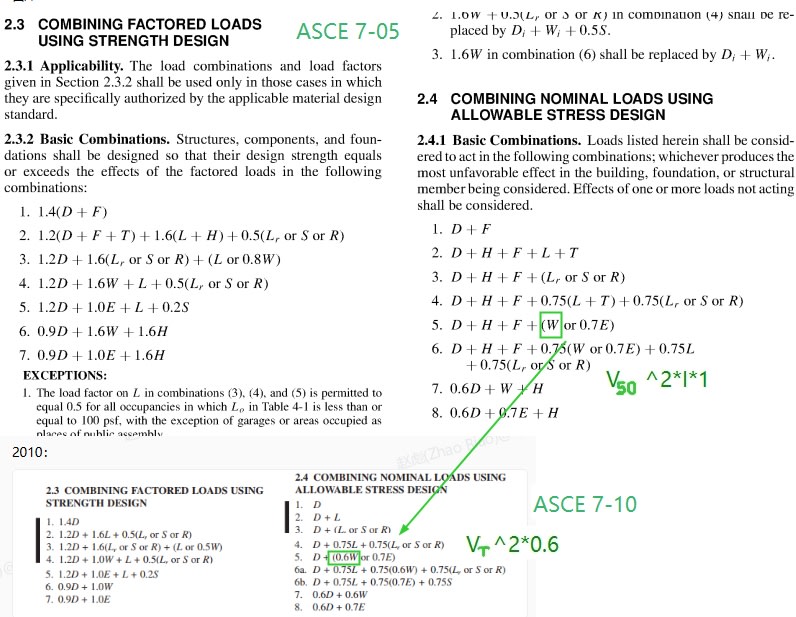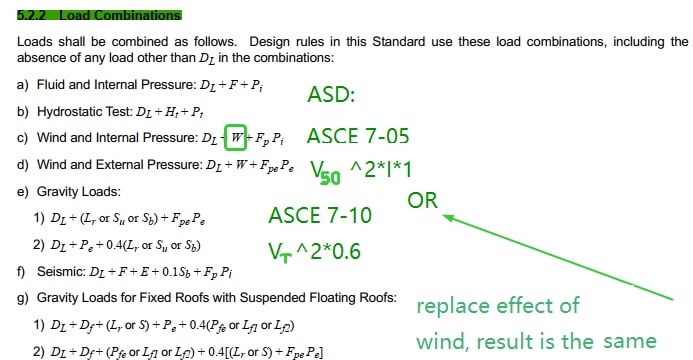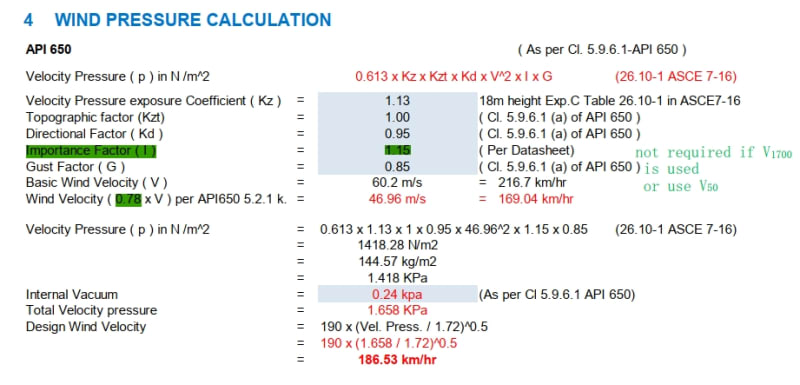In API 650, there is a coefficient 0.78 for wind speed or 0.6 for wind pressure, to convert wind load calibrated based on ASCE 7-10/16 to that calibrated based on ASCE 7-05.
The main difference between ASCE 7-05 and ASCE 7-10/16 is:
1. MRI-50 years for ASCE 7-05, 300/700/1700/3000 years for ASCE 7-10/16;
2. Importance factor;
3. Load factor.
Is 0.78/0.6 applicable to wind speed calibrated based on different MRI?
The main difference between ASCE 7-05 and ASCE 7-10/16 is:
1. MRI-50 years for ASCE 7-05, 300/700/1700/3000 years for ASCE 7-10/16;
2. Importance factor;
3. Load factor.
Is 0.78/0.6 applicable to wind speed calibrated based on different MRI?

